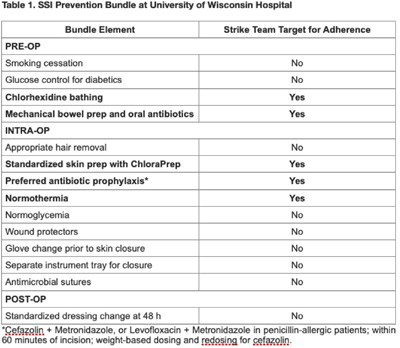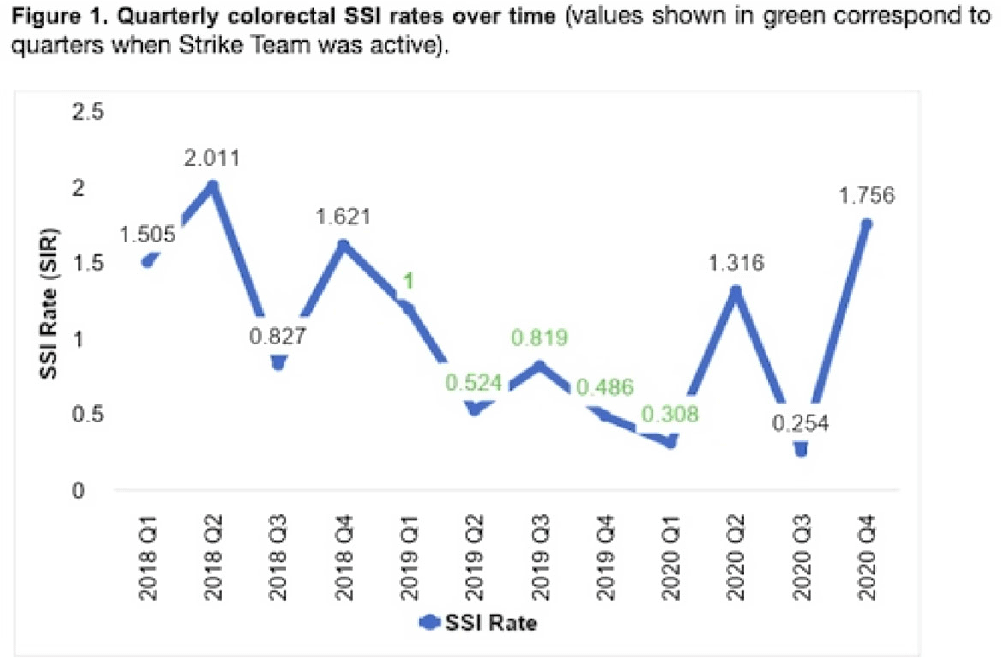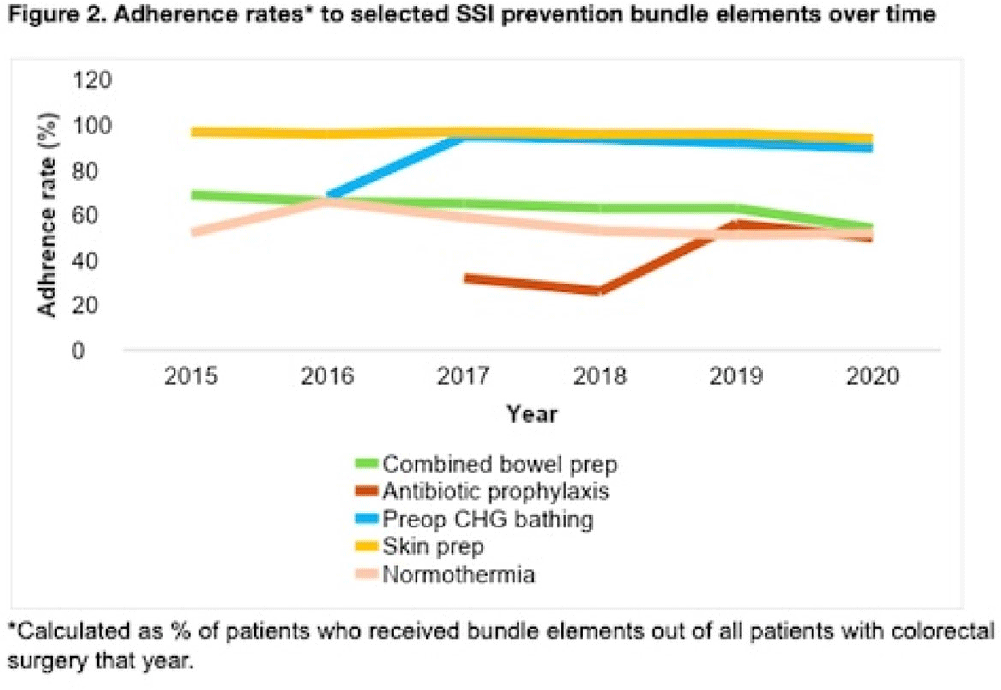207 results
Uptake of Lanthanides by Vermiculite
-
- Journal:
- Clays and Clay Minerals / Volume 36 / Issue 1 / February 1988
- Published online by Cambridge University Press:
- 02 April 2024, pp. 68-72
-
- Article
- Export citation
Clinical laboratory equipment manufacturers’ lack of guidance for high consequence pathogen response is a critical weakness
-
- Journal:
- Infection Control & Hospital Epidemiology , First View
- Published online by Cambridge University Press:
- 25 March 2024, pp. 1-3
-
- Article
-
- You have access
- Open access
- HTML
- Export citation
The cardinal rules: Principles of personal protective equipment for high-consequence infectious disease events
-
- Journal:
- Infection Control & Hospital Epidemiology , First View
- Published online by Cambridge University Press:
- 08 February 2024, pp. 1-3
-
- Article
-
- You have access
- Open access
- HTML
- Export citation
A severe acute respiratory coronavirus virus 2 (SARS-CoV-2) nosocomial cluster with inter-facility spread: Lessons learned
-
- Journal:
- Infection Control & Hospital Epidemiology / Volume 45 / Issue 5 / May 2024
- Published online by Cambridge University Press:
- 04 January 2024, pp. 635-643
- Print publication:
- May 2024
-
- Article
-
- You have access
- Open access
- HTML
- Export citation
Calabrian self-perception and the struggle for recognition in the context of ’ndrangheta stereotypes: oral sources
-
- Journal:
- Modern Italy , First View
- Published online by Cambridge University Press:
- 03 January 2024, pp. 1-17
-
- Article
-
- You have access
- Open access
- HTML
- Export citation
Total and segmental phase angle in a cohort of hospitalised patients with COVID-19: mortality prediction and changes throughout hospitalisation
-
- Journal:
- British Journal of Nutrition / Volume 131 / Issue 8 / 28 April 2024
- Published online by Cambridge University Press:
- 27 December 2023, pp. 1397-1404
- Print publication:
- 28 April 2024
-
- Article
-
- You have access
- Open access
- HTML
- Export citation
Do human capital and institutional quality contribute to Brazil's long term real convergence/divergence process? A Markov regime-switching autoregressive approach
-
- Journal:
- Journal of Institutional Economics / Volume 20 / 2024
- Published online by Cambridge University Press:
- 19 December 2023, e9
-
- Article
- Export citation
Examining the effects of organizational influencers on the implementation of clinical innovations: A qualitative analysis
-
- Journal:
- Antimicrobial Stewardship & Healthcare Epidemiology / Volume 3 / Issue S2 / June 2023
- Published online by Cambridge University Press:
- 29 September 2023, pp. s41-s42
-
- Article
-
- You have access
- Open access
- Export citation
Coronavirus disease 2019 is associated with long-term depressive symptoms in Spanish older adults with overweight/obesity and metabolic syndrome
-
- Journal:
- Psychological Medicine / Volume 54 / Issue 3 / February 2024
- Published online by Cambridge University Press:
- 05 September 2023, pp. 620-630
-
- Article
- Export citation
Traumatic stress symptoms among Spanish healthcare workers during the COVID-19 pandemic: a prospective study
-
- Journal:
- Epidemiology and Psychiatric Sciences / Volume 32 / 2023
- Published online by Cambridge University Press:
- 09 August 2023, e50
-
- Article
-
- You have access
- Open access
- HTML
- Export citation
VISUAL BEHAVIOUR IN THE EVALUATION OF PHYSICAL AND VIRTUAL PROTOTYPES
-
- Journal:
- Proceedings of the Design Society / Volume 3 / July 2023
- Published online by Cambridge University Press:
- 19 June 2023, pp. 3821-3830
-
- Article
-
- You have access
- Open access
- Export citation
Fundamentals and issues of user experience in the process of designing consumer products
-
- Journal:
- Design Science / Volume 9 / 2023
- Published online by Cambridge University Press:
- 28 April 2023, e10
-
- Article
-
- You have access
- Open access
- HTML
- Export citation
311 Mental Illness and the Development of Postoperative Atrial Fibrillation in Transcatheter Aortic Valve Replacement Patients: Trends over Time
- Part of
-
- Journal:
- Journal of Clinical and Translational Science / Volume 7 / Issue s1 / April 2023
- Published online by Cambridge University Press:
- 24 April 2023, pp. 93-94
-
- Article
-
- You have access
- Open access
- Export citation
Towards diverse and contextually anchored paraphrase modeling: A dataset and baselines for Finnish
-
- Journal:
- Natural Language Engineering / Volume 30 / Issue 2 / March 2024
- Published online by Cambridge University Press:
- 16 March 2023, pp. 319-353
-
- Article
-
- You have access
- Open access
- HTML
- Export citation
Vendors’ Capitalism: A Political Economy of Public Markets in Mexico City. By Ingrid Bleynat. Stanford: Stanford University Press, 2021. 264 pp. Bibliography, index. Hardcover, $90.00. ISBN: 978-1-5036-1460-4.
-
- Journal:
- Business History Review / Volume 97 / Issue 1 / Spring 2023
- Published online by Cambridge University Press:
- 10 May 2023, pp. 173-177
- Print publication:
- Spring 2023
-
- Article
- Export citation
Characterising the cave bear Ursus spelaeus Rosenmüller by ZooMS: a review of peptide mass fingerprinting markers
-
- Journal:
- Earth and Environmental Science Transactions of The Royal Society of Edinburgh / Volume 114 / Issue 1-2 / July 2023
- Published online by Cambridge University Press:
- 27 February 2023, pp. 83-93
- Print publication:
- July 2023
-
- Article
-
- You have access
- Open access
- HTML
- Export citation
Prevalence of adiposity-based chronic disease and its association with anthropometric and clinical indices: a cross-sectional study
-
- Journal:
- British Journal of Nutrition / Volume 130 / Issue 1 / 14 July 2023
- Published online by Cambridge University Press:
- 22 September 2022, pp. 93-102
- Print publication:
- 14 July 2023
-
- Article
- Export citation
Dietary diversity and depression: cross-sectional and longitudinal analyses in Spanish adult population with metabolic syndrome. Findings from PREDIMED-Plus trial
-
- Journal:
- Public Health Nutrition / Volume 26 / Issue 3 / March 2023
- Published online by Cambridge University Press:
- 19 July 2022, pp. 598-610
-
- Article
-
- You have access
- Open access
- HTML
- Export citation
Mexico's Business and Entrepreneurship in the Era of Nationalism
-
- Journal:
- Business History Review / Volume 96 / Issue 2 / Summer 2022
- Published online by Cambridge University Press:
- 02 June 2022, pp. 289-324
- Print publication:
- Summer 2022
-
- Article
- Export citation
The Strike Team as an implementation strategy for surgical infection prevention
-
- Journal:
- Antimicrobial Stewardship & Healthcare Epidemiology / Volume 2 / Issue S1 / July 2022
- Published online by Cambridge University Press:
- 16 May 2022, p. s13
-
- Article
-
- You have access
- Open access
- Export citation






